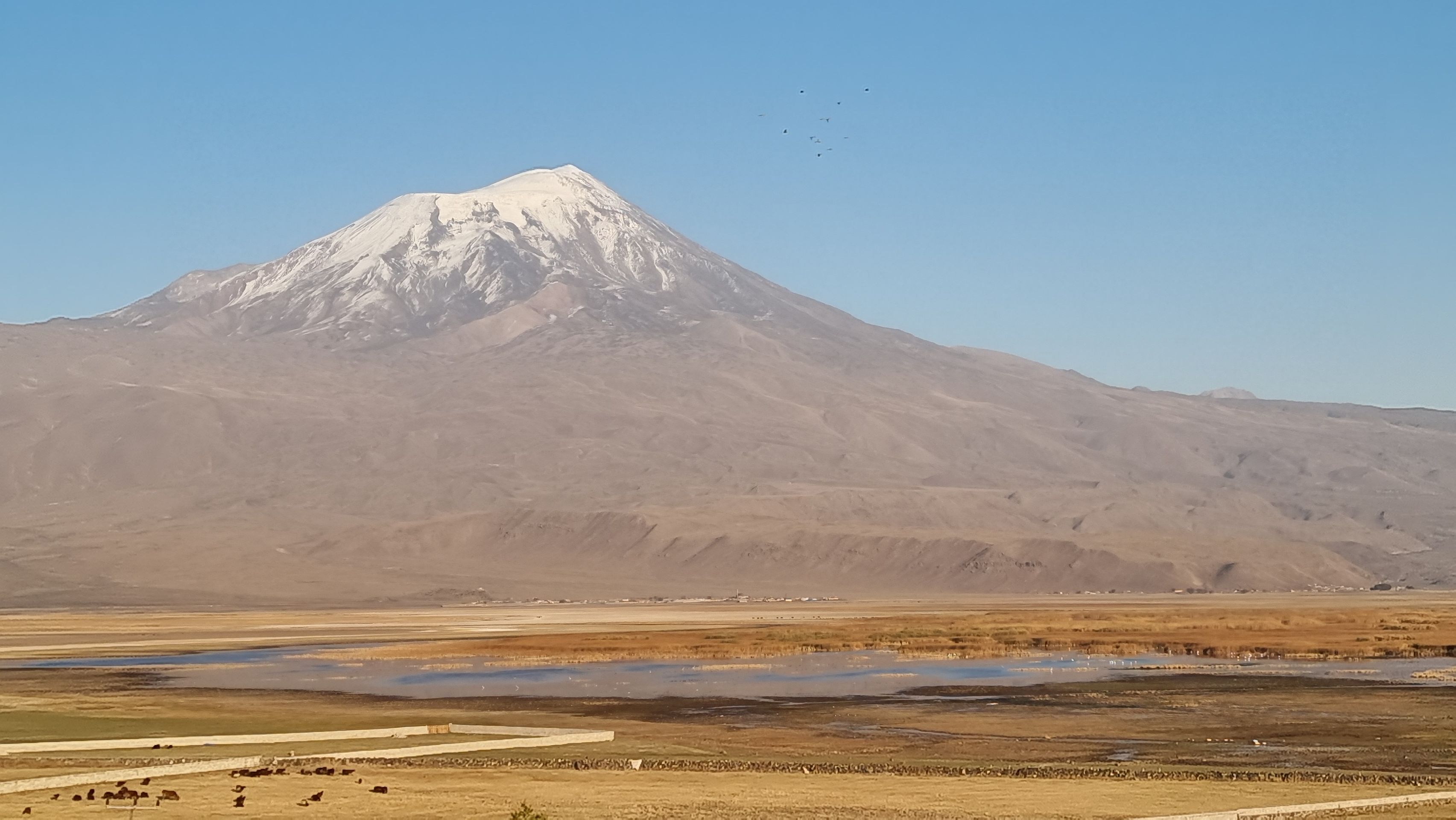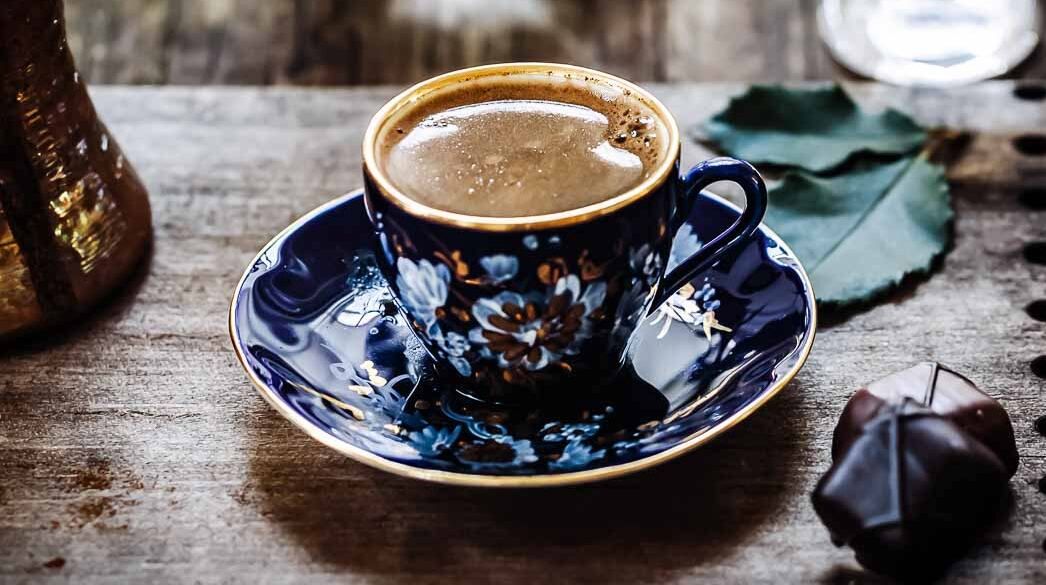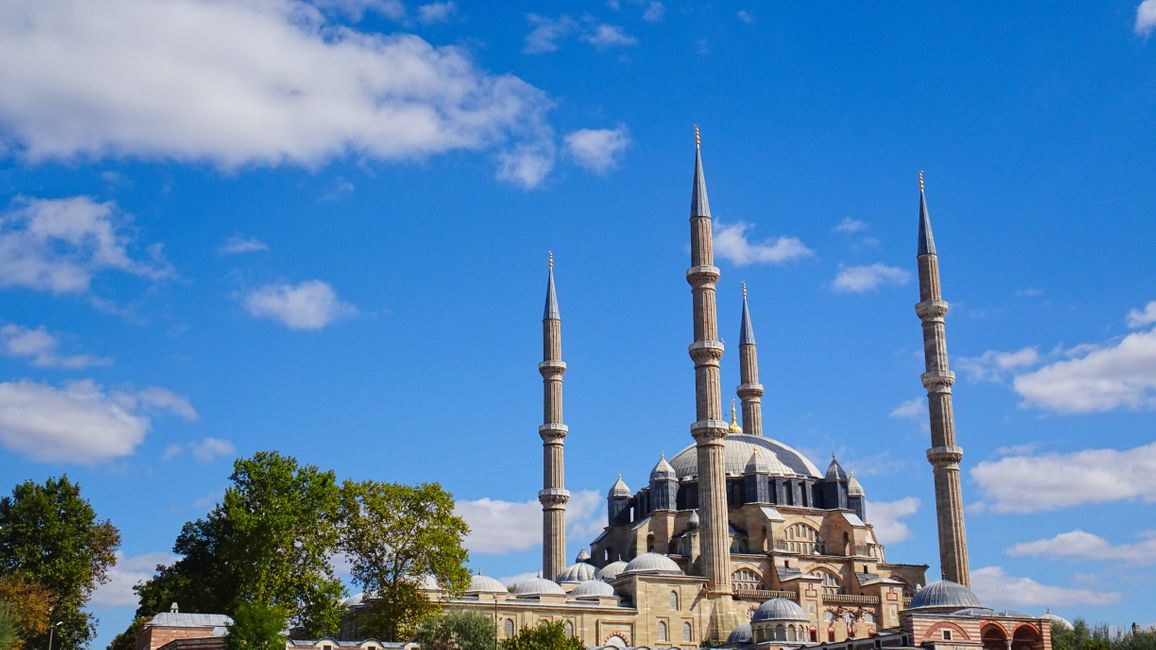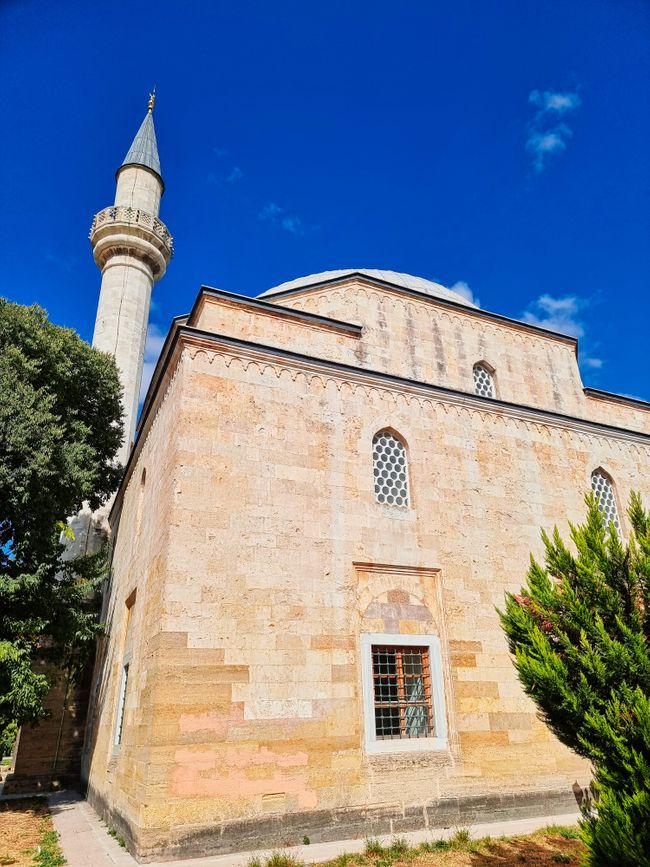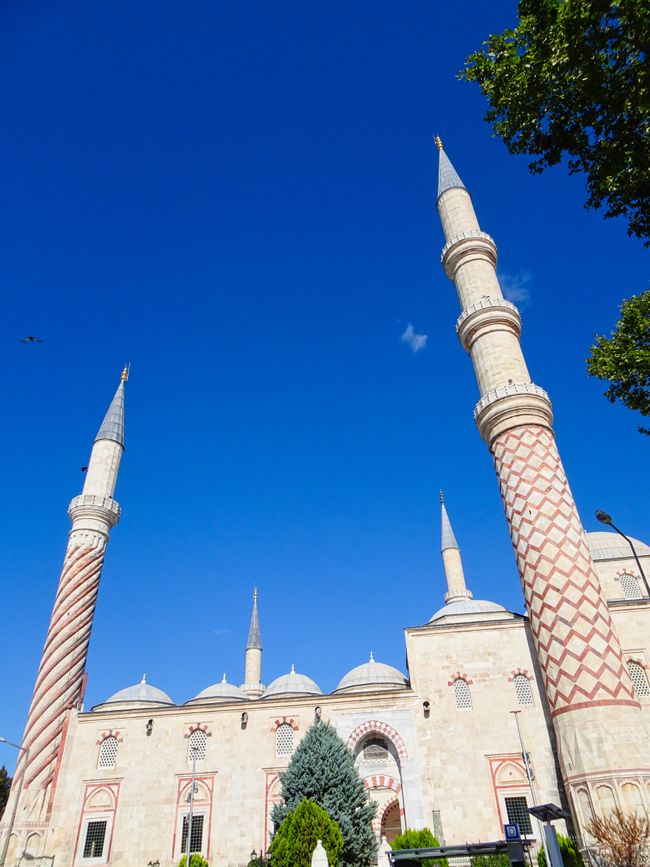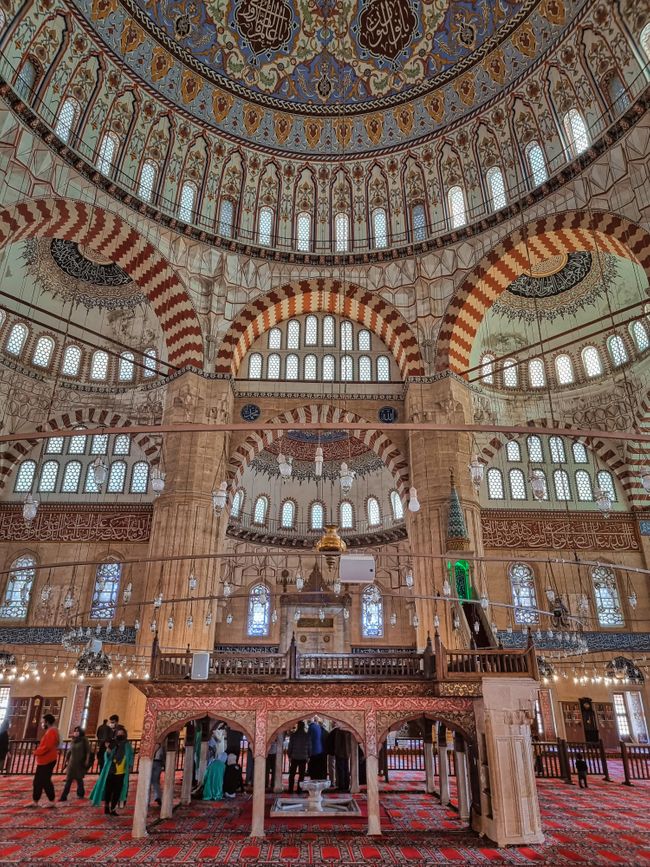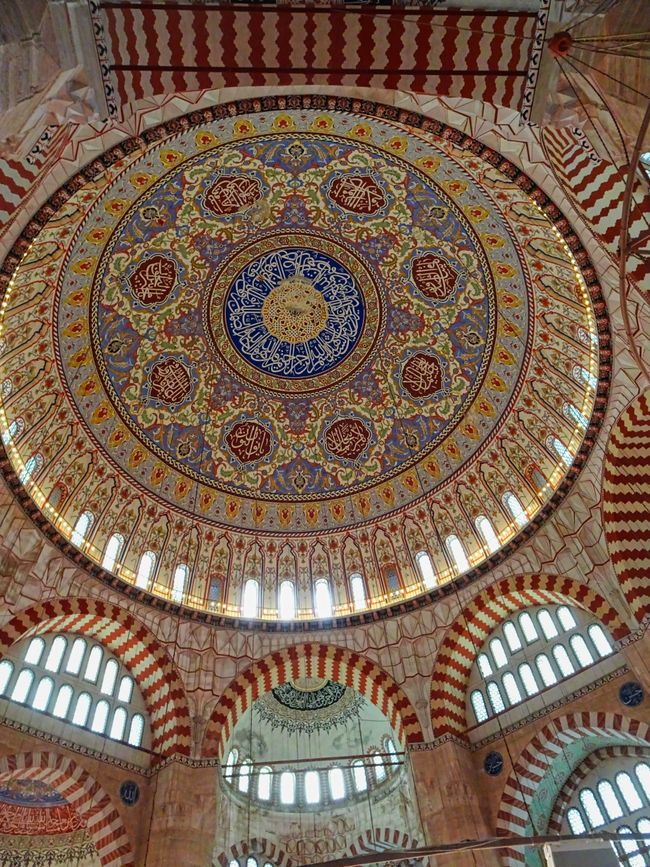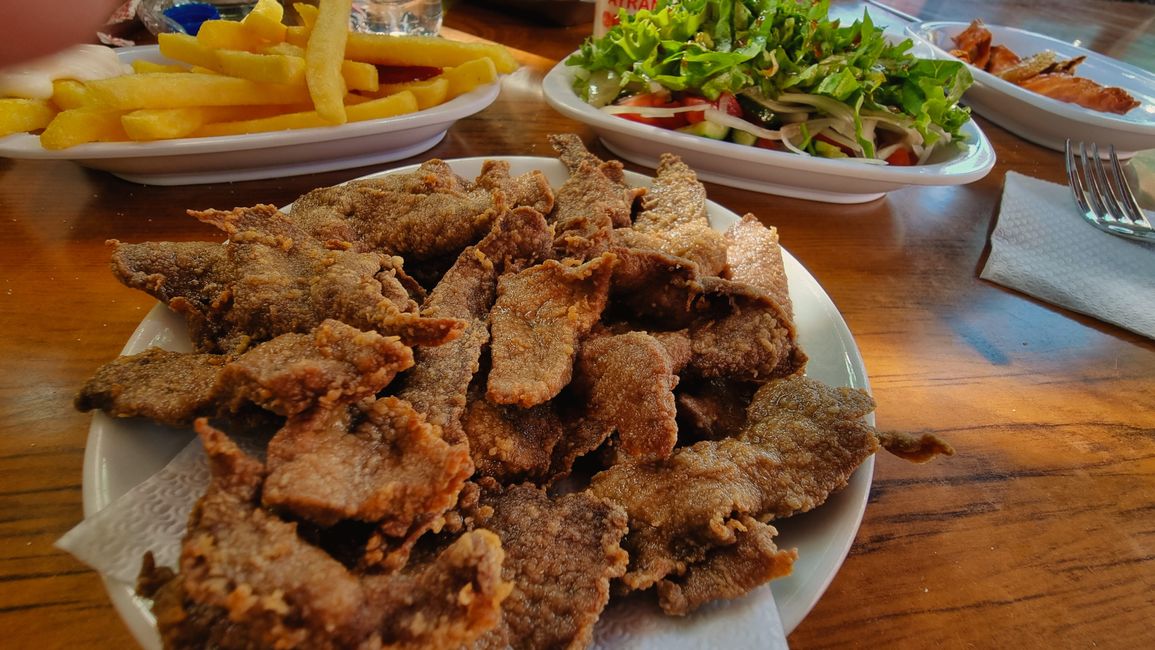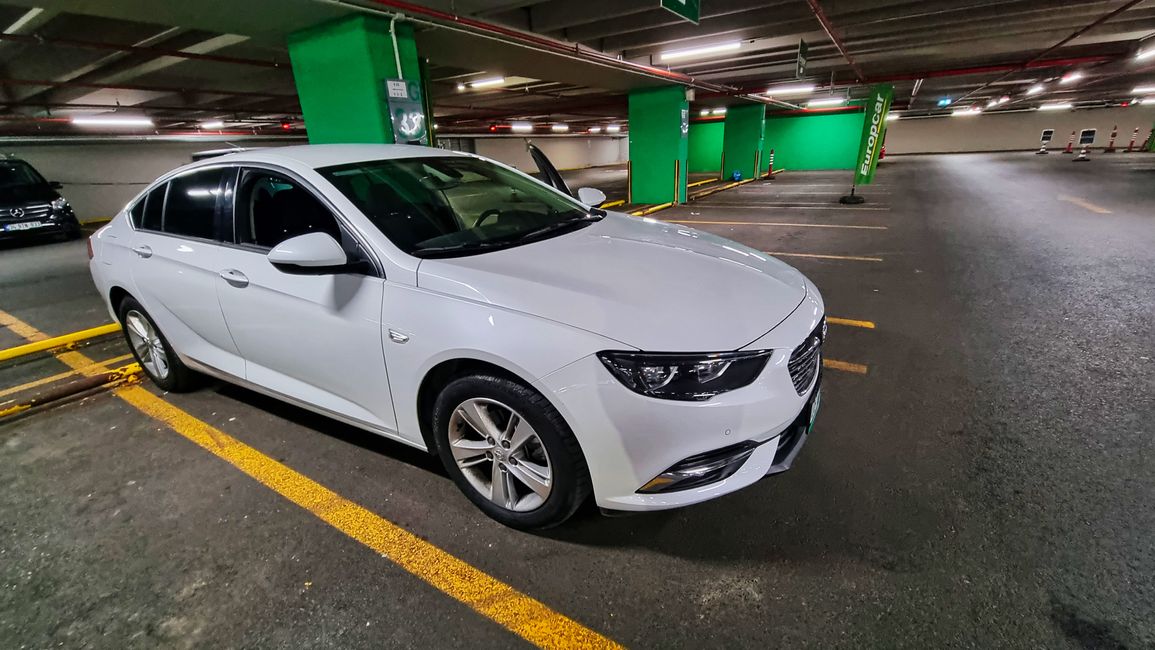Day 2 - Don Curry in the Mosque Frenzy
شائع شدہ: 04.10.2021
Don Curry is generally interested in religions. He finds it fascinating how diverse the concepts of God and the search for meaning have developed in different cultures around the world. Almost always, religions have influenced, shaped, and further developed cultures - even in the fields of visual arts, literature, music, and architecture.
Today, Don Curry's journey focuses on the architecture of Ottoman mosques, taking him on a real journey through the history of architecture - to the pinnacle of this development. Such a study of architectural evolution can be conducted in Istanbul, but it can also be done in a much smaller place: the small city of Edirne, located on the westernmost edge of present-day Turkey.
But first, Don Curry had to make his way there, driving more than 200 km through the Turkish province of Thrace, the European part of this bi-continental country. He made good time on a initially four-lane and later three-lane and relatively empty highway. And it wasn't just the highway that was empty, his gas tank was also running low. So Don Curry stopped at his first Turkish gas station. Immediately, three gas attendants of both genders approached his car, all of whom only spoke Turkish. However, just one word from Don Curry was enough to start the refueling process: 'Diesel'; along with an upward held hand, symbolizing a full tank. Sometimes, communication can be so simple across all language barriers. After refueling and getting his windshield cleaned, Don Curry received a receipt, which he wanted to pay right away. But payment could only be made inside the building and with the help of the receipt. So Don Curry gave the cashier inside the receipt, paid the pleasantly low sum of about 34 Euros for a full tank, and received a duplicate receipt. As soon as he returned to his car, his gas attendant rushed towards him, requesting something he didn't understand. It took him a moment to realize that one of the duplicate receipts was for the gas attendant. Only after this form of inspection could he leave the gas station. Don Curry did just that and only realized later that he had actually wanted to give a tip for the windshield cleaning. Well, he now knew that at the next gas station he would not only be a customer but also a courier of receipts. The rest of the drive was like a dream, the dream of an almost empty highway where traffic jams are inconceivable...
Don Curry just realized that he hasn't introduced his vehicle for the coming weeks yet: it is gleaming white, like most cars in Turkey, and much too big. When booking, Don Curry had chosen a compact car, but he was provided with a full-size sedan, an Opel called Insignia. The trunk was so spacious that his huge suitcase could easily fit in it three times. For slightly smaller people, the trunk could also serve as emergency accommodation. However, parking would not always be easy, but on the highway, the Insignia drove wonderfully smoothly.
You can still see that Edirne was a fairly important city during the time of the Ottoman Empire from the rich array of historic buildings in the center, ranging from caravanserais, bazaars, and Turkish baths to numerous magnificent mosques. After being assigned a parking space right next to the central caravanserai, Don Curry eagerly set out to find the mosques. Following historical logic, he started with the rather small Eski Cami, the Old Mosque from 1414. Today, it is located right next to a school, so its surroundings, including the cemetery, are used as an extended playground; it was quite lively there. However, the mosque itself was closed. So Don Curry could only admire a fairly small, simply designed building with just one minaret.
This mosque also seemed too simple for the Ottoman sultans. Just 23 years later, they ordered the construction of a much larger and more magnificent prayer hall, the Üç Serefeli Cami, the Three-Balcony Mosque. The three balconies are located on the tallest of the four minarets; the others have only two or even just one balcony. The mosque is fascinating from the outside, especially due to the noticeable differences in height and decoration of its four minarets; almost as if the architect wanted to present four different prototypes to the sultan so that he could choose his favorite model. Even more beautiful than the unique minaret ensemble is the extensive courtyard with the ablution fountain. Partially ancient marble columns and colorful ceiling frescoes adorn the colonnade, while the entrance portal to the mosque surprises with delicate plaster decorations. The interior is breathtaking: an exceptionally wide dome with expressive murals looms over a spacious prayer hall structured by several massive stone columns. Yes, Don Curry could imagine that a space like this helps to leave behind all that is too earthly and too human for a few moments, to elevate oneself in prayer. Could a mosque be any more beautiful?
It could, at least if it was designed by the Ottoman star architect Sinan Pasha and if he deemed it his most successful work. Don Curry had already spotted the soaring four minarets of the Selimiye Cami in the distance, and they all had three balconies... This mosque was built 150 years after its grand predecessor and had to be even better in all areas. The highest hill on the outskirts of the then Edirne was chosen as the site for Sinan's mosque, so that it is still visible from afar when approaching the city. Right next to the prayer house is a small market area, from which one can ascend to the outdoor area via stairs. Well-kept lawns, magnificent entrances to the courtyard, a richly decorated ablution fountain, and then the first glimpse of the interior... Don Curry indulged in spiritual and aesthetic well-being when suddenly a woman's voice scolded him sharply. Only gradually did he understand his inappropriate behavior. He wanted to put his shoes on the shelves on the wall as usual. But the woman, a uniformed mosque guard, energetically chased him away from the wall shelves. Because here, as Don Curry only now realized, was the women's area - on the outskirts of the mosque. Only men were allowed to proceed and had their own shoe shelves there. It was fortunate that the guard was alert: who knows what could have happened if Don Curry had placed his men's shoes next to completely unknown women's shoes....?
Being brought back to earth in this way, Don Curry found a quiet corner in the huge, light-filled space. Not only were there numerous windows, but also all the chandeliers were lit, as it was prayer time. Dozens of men in the front area of the mosque - closed off to tourists - and significantly fewer women in the rearmost area - beyond the male tourists - listened to a long sermon, followed by the sung prayer recited by the imam. Don Curry marveled at the long pauses between the individual calls to prayer and the filled silence maintained by a total of over a hundred worshipers. Where people can truly be silent together, genuine faith blossoms, another has a voice. It proved to be a great gift to not only admire this mosque as an architectural masterpiece but to experience it in its original purpose: as a house of prayer. Even though Don Curry did not understand in detail what was sung and prayed there, the unifying attitude of these people was palpable. And that felt good. Of course, he also admired the huge dome, which, for the first time - about 1000 years later - surpassed the dimensions of the Hagia Sophia in Istanbul, the beautiful minbar, and many other decorative elements of the building, but his elation had a different origin... (And he would have liked to put his shoes on the women's shelves even more now.)
After so much art and religion, Don Curry was also reminded of more mundane matters. But even in this regard, Edirne had something special to offer. The city is known throughout Turkey for a specialty: ciğer tava. It is listed at the top of almost every restaurant's menu, and there are even restaurants that specialize exclusively in this one dish, known as Ciğerias - liver restaurants. Because ciğer tava consists entirely of very thinly sliced veal liver, coated in flour and then crisp-fried; typical accompaniments include a spicy chili sauce and large dried chilies. Don Curry had read that every guidebook favored a different liver restaurant, but he simply chose one on the main square where he could sit outside under the trees. The waiter didn't speak English, but he brought a picture menu from which Don Curry ordered the fried liver, a salad, and French fries as a side dish. The chili sauce, dried peppers, and a generous serving of fresh bread were also brought to the table. As an avid guidebook reader, Don Curry also knew that Ayran is considered the typical drink for this dish, to soothe the palate after the spicy accompaniments; and when he ordered 'su' = 'water' in convincing Turkish, he even received an approving smile from the waiter. To make a long story short: the meal was incredibly delicious! Only the French fries didn't quite convince with their excessive greasiness, everything else tasted all the better. Don Curry noticed that, like yesterday, the salad replaced vinegar with lemon juice, making it taste even fresher. He paid a total of 7.60 Euros for the liver + salad + fries + mayo + ketchup + chili sauce + chilies + 2 breads + 0.5 water + 0.3 Ayran + Turkish coffee + 0.2 water. Unbelievable!
After visiting the historic bazaar district, Don Curry made his way back home. At a large supermarket, he stocked up on drinks for the next few days and, after over 2 hours of driving, returned to his small hotel on the Black Sea. Although he arrived just in time for the sunset, it was rather inconspicuous today. With a Turkish lentil soup and 3 cheese toasts to go with his Efes beer, he filled his stomach once again and looked forward to the next day. Don Curry knew: it would serve up several more mosques to him...
جواب دیں۔
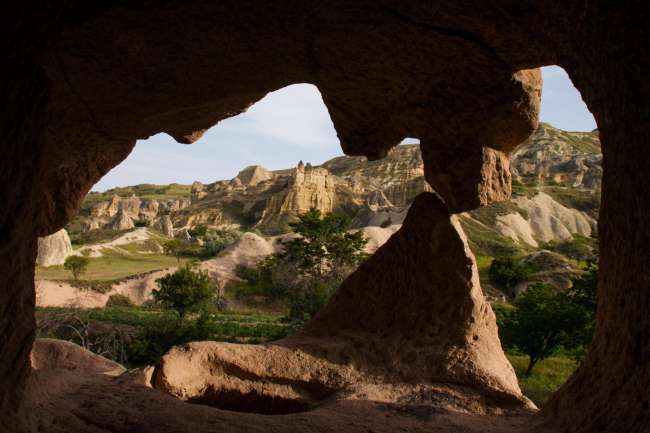
سفری رپورٹس ترکی
